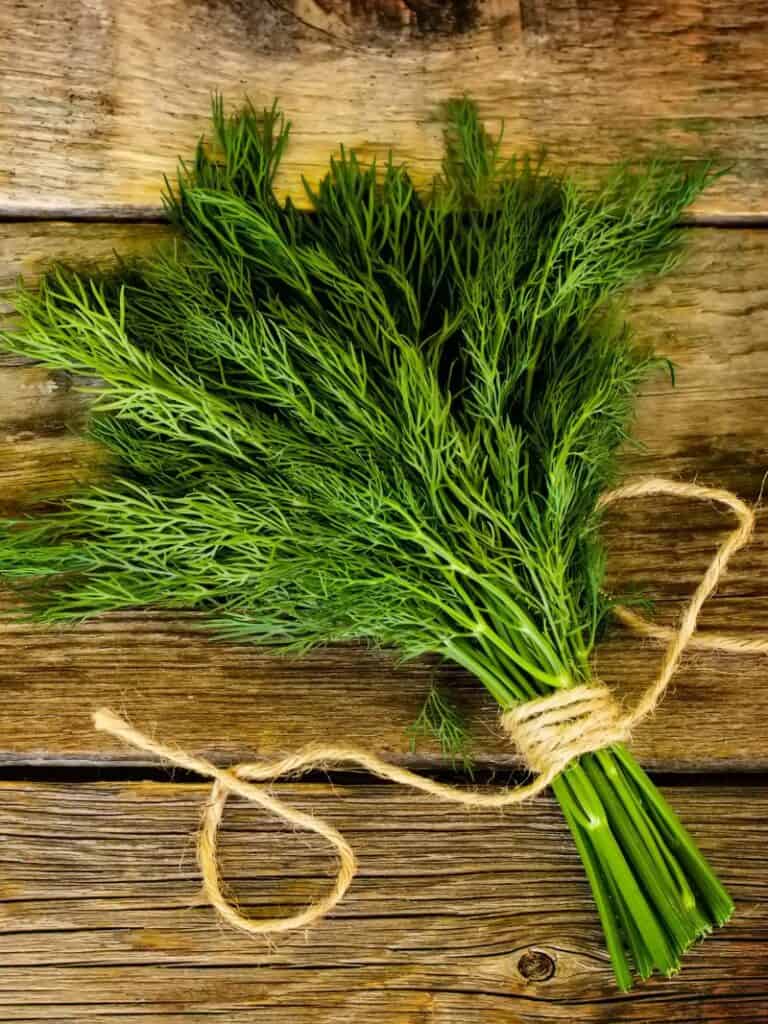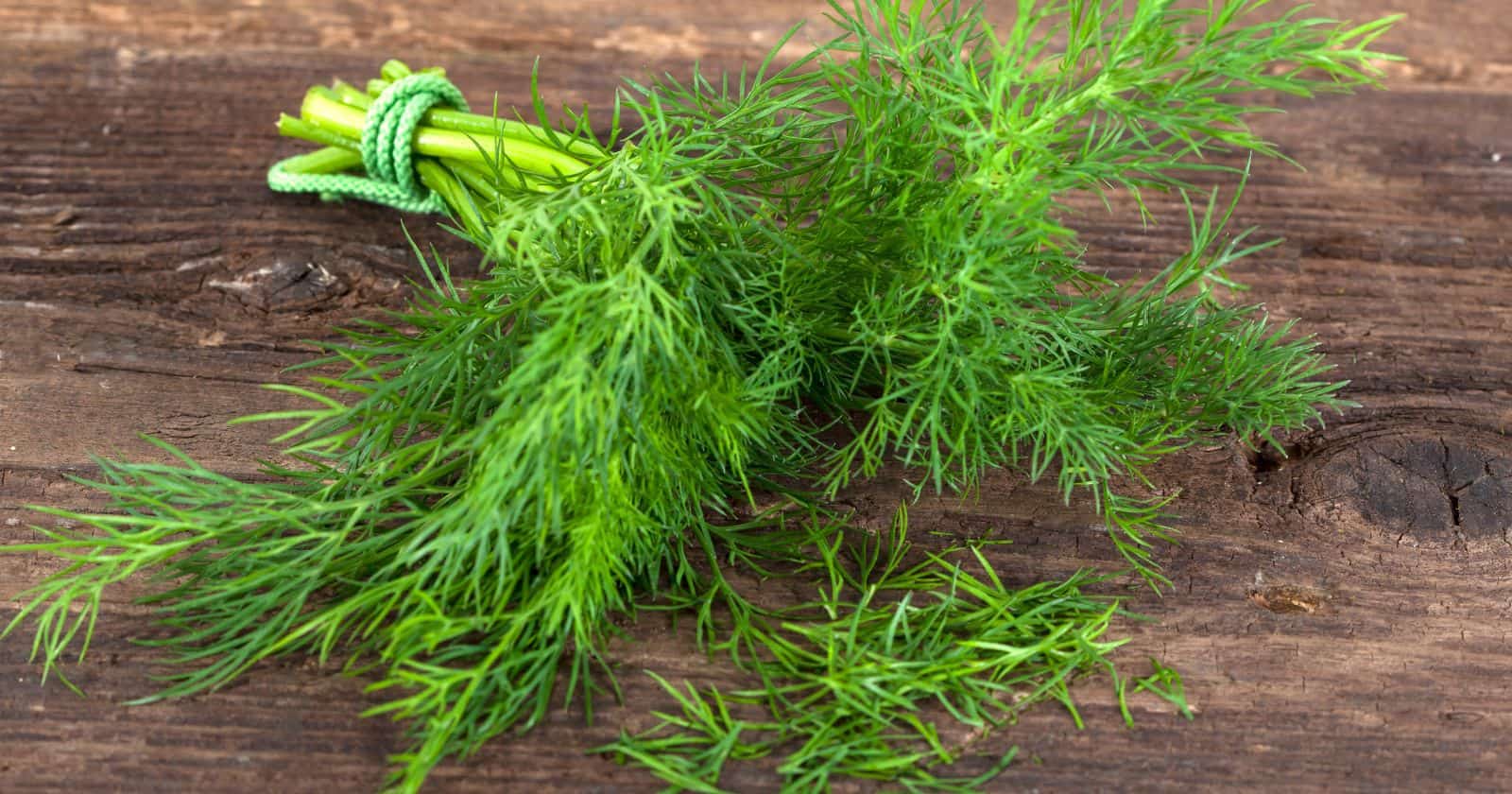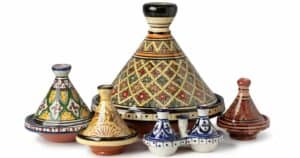Are you tired of using the same old herbs and spices in your dishes? Are you looking for a way to
Look no further than dill! Dill is a versatile herb that can add flavor to just about any dish.
Dill is an annual herb that belongs to the celery family. Its feathery green leaves and seeds are commonly used in various cuisines, ranging from European to Asian. Dill boasts a sweet, tangy flavor that pairs well with seafood, poultry, and vegetables. Plus, dill is packed with nutrients like Vitamin C, calcium, and iron, making it a healthy addition to your diet.
In this blog post, we’ll explore the many benefits of dill and its various uses in the kitchen. From homemade pickles to creamy sauces, we’ll show you how to incorporate dill into your everyday cooking. So let’s get started and discover the wonders of this herb!
What is Dill?

Dill is an herb that belongs to the celery family. It has feathery leaves that are bright green and have a slight licorice flavor. Dill is used to season pickles, eggs, salads, and other dishes. It is native to North Africa, Chad, Iran, and the Arabian Peninsula but is widely grown in Europe and Asia.
Dill’s botanical classification and growing patterns:
- Botanical name: Anethum graveolens
- Annual herb
- Grows up to 3 feet tall
- Likes full sun and well-drained soil
- Can be grown from seed or transplants
Dill’s historical uses:
- Used by ancient Greeks and Romans for medicinal purposes, such as indigestion and bad breath
- Used by Vikings to make a “magical” potion to ward off evil spirits
- Used in medieval times as a potent ingredient to ward off witchcraft
- Used during the Middle Ages to combat the bubonic plague
- Used in Indian and Pakistani cuisine for its unique flavor and digestive properties
Dill is a versatile herb with a rich history and many uses. Whether you use it for cooking or its medicinal properties, dill is a valuable addition to any herb garden.
Nutritional Benefits of Dill
Dill is an herb with many nutritional benefits. It is an excellent source of vitamins, minerals, and antioxidants, providing various health benefits.
Here are some of the vitamins and minerals present in dill:
- Vitamin C: A powerful antioxidant that helps protect the body from damage caused by free radicals.
- Magnesium: Helps regulate muscle and nerve function, blood sugar levels, and blood pressure.
- Vitamin A: Supports healthy vision, immune function, and skin health.
- Fiber: Aids digestion, promotes bowel regularity and supports heart health.
- Folate: Important for fetal development during pregnancy and helps reduce the risk of certain birth defects.
- Calcium: Essential for strong bones and teeth.
- Riboflavin: Helps the body convert food into energy.
- Manganese: Necessary for bone health and metabolism.
- Iron: Aids in the formation of red blood cells.
- Copper: Important for the formation of collagen and bone health.
Health Benefits of Dill
In addition to its nutritional value, dill has several health benefits. Here are a few of them:
- Antioxidant Properties: Dill contains several antioxidants that help protect the body from damage caused by free radicals, which can contribute to aging and disease.
- Aid Digestion: Dill can help relieve digestive issues such as bloating, gas, and stomach cramps due to its ability to stimulate the production of digestive juices.
- Reduce Inflammation: Dill contains anti-inflammatory compounds, which may help reduce inflammation and prevent chronic diseases such as arthritis and heart disease.
- Support Bone Health: Dill is a good source of calcium, manganese, and vitamin K, essential for maintaining strong bones and preventing osteoporosis.
- Reduce Bad Breath: Dill has antimicrobial properties that can help reduce bad breath caused by bacteria in the mouth.
Overall, dill is a nutritious herb that can be enjoyed in various dishes. It is a good source of vitamins, minerals, and antioxidants, providing several health benefits. Adding dill to your meals is an easy way to boost your nutrition and support your overall health.
Culinary Uses of Dill
Dill has a unique flavor that is a combination of sweet, sour, and bitter. It is widely used in cooking, especially in Scandinavian, Russian, and Eastern European cuisines.
Here are some culinary uses of dill:
- Pickling: Dill is an essential ingredient in pickling vegetables, such as pickles, cucumbers, and beets.
- Soups and stews: Dill is often added to soups and stews, particularly fish-based ones.
- Sauces: Dill is used to flavor sauces, including white sauce, tartar sauce, and aioli.
- Salads: Dill can enhance the flavor of salads, particularly potato salad, coleslaw, and egg salad.
- Seafood: Dill pairs well with seafood dishes, including salmon, crab, and shrimp.
Pairing Suggestions for Dill in Different Types of Dishes
Dill has a fresh and herbaceous flavor that pairs well with various ingredients. Here are some pairing suggestions for dill in different types of dishes:
- Vegetables: Dill goes well with vegetables such as asparagus, broccoli, carrots, and tomatoes.
- Meat: Dill pairs well with chicken, lamb, pork, and beef.
- Seafood: Dill complements the flavor of seafood such as salmon, cod, halibut, and shrimp.
- Dairy: Dill is often used to flavor dairy products, including sour cream, cream cheese, and yogurt.
- Spices: Dill is often paired with garlic, onion, and mustard.
Explanation of How to Use Fresh vs. Dried Dill
Fresh and dried dill can be used interchangeably in most recipes. However, there are some differences to keep in mind:
- Fresh dill has a more robust flavor than dried dill.
- Dried dill is more concentrated than fresh, so you must use less of it in a recipe.
- Fresh dill is best used when the recipe calls for a subtle hint of herbaceous flavor, while dried dill is better suited for dishes that require a more substantial flavor profile, such as pickling.
- When substituting fresh dill for dried dill, use three times as much as the recipe calls for dried dill.
How to Grow Dill: Ideal Growing Conditions and Harvesting Tips
To grow dill successfully, you need to follow a few key steps. First, plant the seeds directly in the ground where you want them to grow, as dill does not transplant well. Next, ensure that the growing conditions are ideal.
Ideal Growing Conditions for Dill
- Full sun: Dill requires plenty of sunlight to grow well. Choose a spot in your garden with at least six hours of direct sunlight daily.
- Well-drained soil: Dill needs soil that drains well to avoid waterlogging. To improve soil structure, add organic matter, such as compost, to ensure that your soil has good drainage.
- Slightly acidic soil pH: The pH of your soil should be between 5.5 and 6.7 for optimal growth. You can test your soil’s pH using a testing kit available at most garden centers.
- Light seed coverage: Dill seeds need light to germinate, so they should remain bare on the surface or be pressed gently into the soil surface. Sow the seeds about 1/4-inch deep and wait for the seedlings to appear.
Tips for Harvesting and Storing Fresh Dill
- Harvest early in the day: Dill is best harvested early in the day before the sun is too high, as this will help to preserve its flavor.
- Harvest before flowering: Dill is in its prime, so try to harvest it before the flowers appear. This will ensure that you get the most flavor from your crop.
- Store in the refrigerator: To store fresh dill, wrap it in a damp paper towel and place it in a plastic bag in the refrigerator. It will stay fresh for up to a week.
- Freeze for later use: If you have more dill than you can, freeze it for later use. Chop it into small pieces and store it in an airtight container or freezer bag in the freezer. It will last for up to six months.
Where to Buy Dill
If you’re looking to buy dill, there are several options:
Grocery stores
Most grocery stores carry fresh dill in the produce section or dried dill in the
Farmers markets
Local farmer’s markets often sell fresh herbs, including dill, during growing seasons.
Online retailers
Several online retailers sell dried dill or dill seeds, which can be used for planting.
When buying dill, look for fresh dill that is bright green and fragrant. Avoid wilted, yellowed or brown leaves. If purchasing dried dill, ensure it is within the expiration date for maximum flavor.
Dill blossoms resemble little yellow fireworks and their flavor is just as brilliant.
A tiny pinch of this chartreuse-colored pollen adds familiar notes of citrus, menthol, and licorice to any culinary creation.
Dill pollen's concentrated flavor cooks away easily. Use this spice as a finishing salt for tomato soup, grilled seafood, or crisp salads.
Dill Substitutes
If you’re out of dill, fear not! There are several substitutes you can use in its place. From fresh herbs to spices and even artificial flavorings, here are some options:
Fennel fronds
Like dill, fennel has a licorice-like flavor that goes well with fish and salads. Use the feathery fronds to add a burst of flavor to your dishes.
Tarragon
This herb has a similar anise taste to dill, making it a great substitute. Use it in dressings, sauces, and marinades.
Chervil
Chervil has a delicate anise flavor but milder than dill. Use it in soups and stews or as a garnish for eggs or seafood dishes.
Celery seed
If you don’t have fresh herbs, celery seeds can be an excellent substitute for dill. Just use it sparingly, as it can be quite strong.
Artificial dill flavoring
If all else fails, you can try using artificial dill flavoring. This won’t give you the same fresh, herbaceous flavor as real dill, but it can be a good option if you’re in a pinch.
Ultimately, the best substitute for dill will depend on the recipe and your tastes. Don’t be afraid to experiment and try different options until you find the perfect match.






